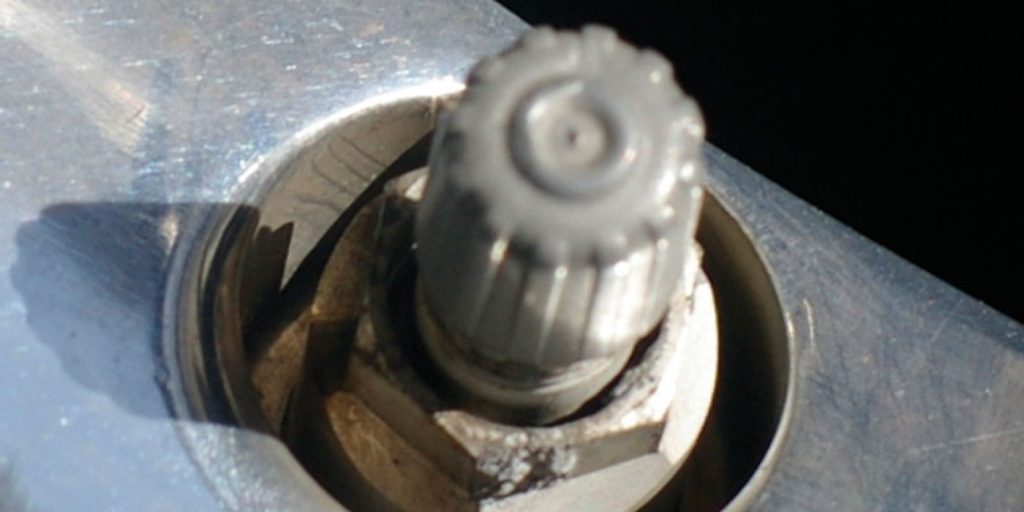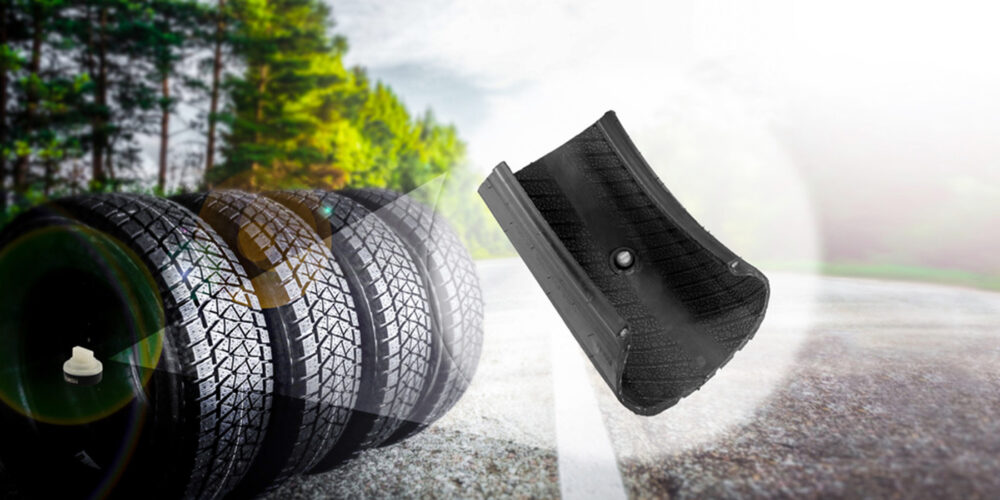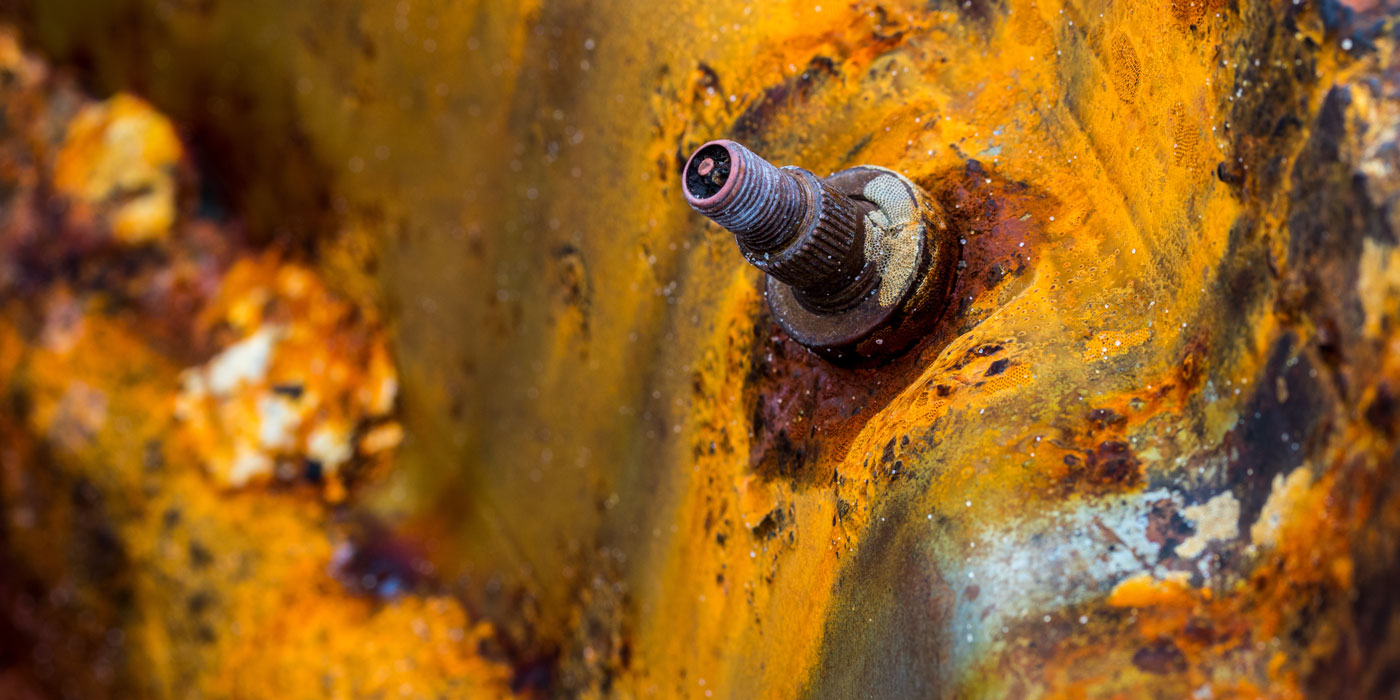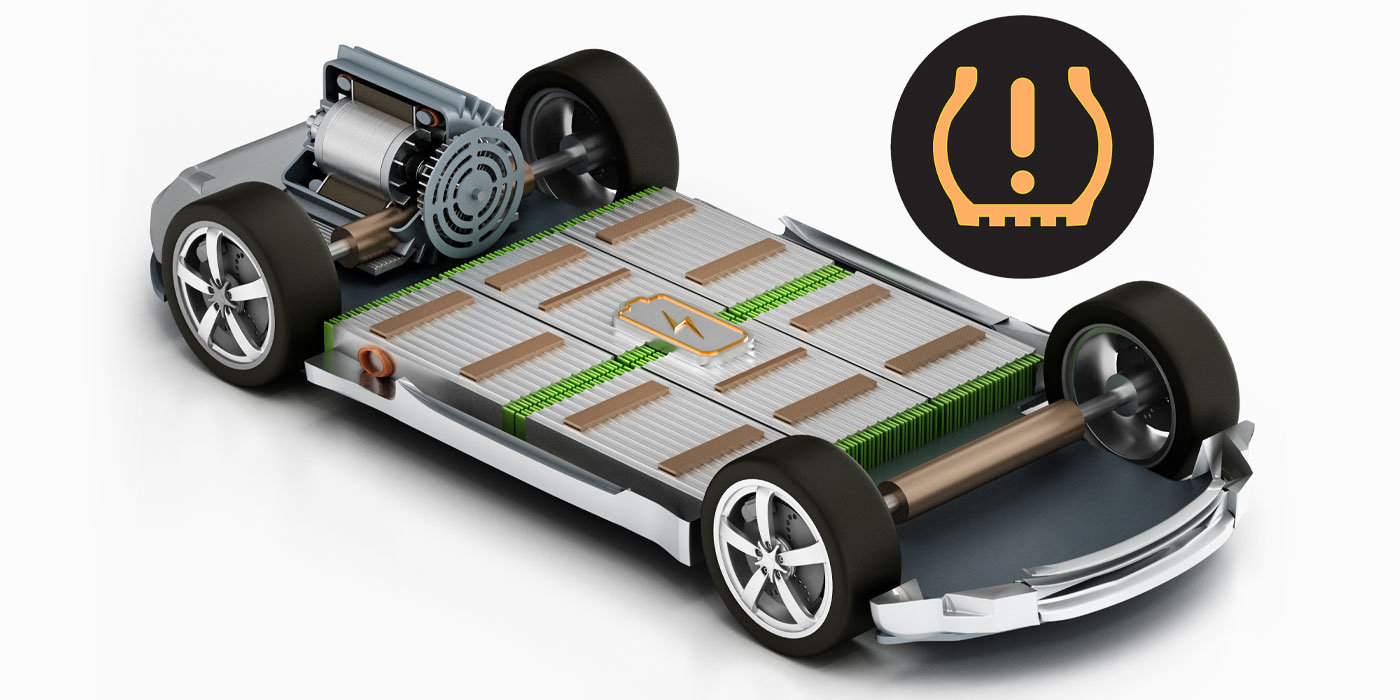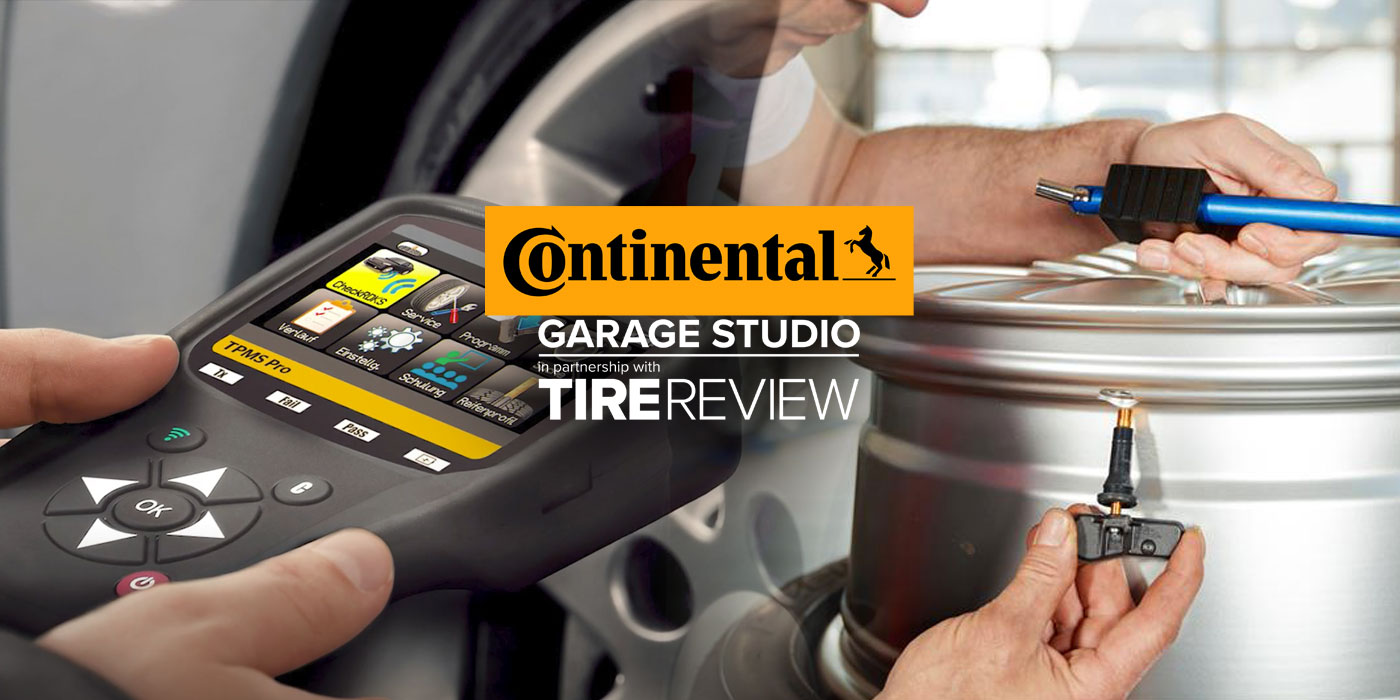There are many products on the market that are very convenient for both drivers and service providers, but some can have an effect on TPMS systems.
Below are a few of those products and recommendations for how to keep the TPMS system functioning properly in these unique circumstances.
Tire Sealants
Some vehicle manufacturers have stopped including a spare tire and instead provide the driver with an extended mobility kit. This will most often include a tire sealant. The purpose of tire sealants is to seal any punctures or cracks on the inside of the tire temporarily until the driver can get to safety. Because of the nature of the product, it is easy to see how tire sealants can be damaging to a TPMS system. The chemicals used in sealants may cause various parts of a sensor to corrode and can also plug the pressure port on a sensor. The pressure port is a small hole in the sensor that is responsible for reading the tire’s air pressure. The pressure port must remain free of debris in order to work properly.
If a vehicle comes in for service and the TPMS light is blinking before remaining solid, this signals that there is something wrong with the TPMS system. Once the valve core is removed, the service provider should be able to smell if a tire sealant was used. They should check and see if the pressure port on the sensor is plugged. If this is the case, sensor replacement is necessary.
Balancing Beads
Balancing beads are often used for commercial trucks and some light truck applications in place of traditional wheel weights. It is very important to make certain that the balancing beads used are compatible and safe for TPMS to avoid sensor damage and replacement.
When using balancing beads, always be sure to follow the manufacturer’s recommendations and instructions.
The chemicals used in sealants may cause various parts of a sensor to corrode and can also plug the pressure port on a sensor.
Nitrogen
Nitrogen has no effect on TPMS. In many cases, nitrogen actually performs better in a tire than standard air. A nitrogen molecule is considerably larger than an air molecule, leading to fewer air leaks and also less temperature fluctuation. Honestly, I feel an accurate tire gauge is more practical than paying for nitrogen.
Reverse-Mount Valve Holes
Some rims are equipped with a valve hole that is pointing inward toward the vehicle rather than to the outside like standard valve holes. If a rim set is equipped with reverse-mount valve holes as well as a TPMS system with wireless auto-location (WAL), the system will most likely fail to locate each sensor accurately and display its correct location on the dashboard. WAL systems use the direction of the wheel and the location of the receiver to detect left and right location and front and rear location. In the case of reverse-mount valve holes, the vehicle will display the pressures incorrectly. Tires on the left-hand side of the vehicle will be displayed on the right-hand side of the vehicle, and the sensors on the right-hand side of the vehicle will be displayed on the left-hand side of the vehicle.
Sometimes reverse-valve holes are manufactured with two-valve hole options on the same rim—one in the center of the rim and one on the inside of the rim. It’s recommended to use an OE-approved 90˚ sensor for the center hole and plug the other reverse-valve hole to avoid any hindrance to the TPMS system.
Jacki Lutz is the Global Head of Communications, Training and E-Commerce for Schrader TPMS Solutions, a global leader in TPMS. She is a TIA ATS instructor and serves on a variety of industry boards.
Check out the rest of the January digital edition of Tire Review here.

